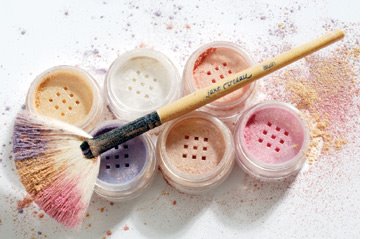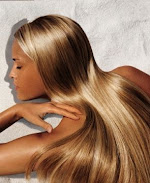We toss on sunscreen and go on our way, secure in the fact that we’re protected from the dangerous - and aging – rays of the sun.
Unfortunately, unless you know what to look for in a sunscreen, you may not be getting the protection you think.
The reason? Many of the products sold today can only offer long lasting protection from the short length UVB rays of the sun.
And while that’s important – these are rays responsible for that nasty, painful sunburn - research now shows that it’s really the long length UVA rays that may be the most damaging of all.
These are the rays, say experts, that cause not only the kind of deep, penetrating cell damage that increases your risk of skin cancer, but also increases the kind of damage that linked to premature skin aging.
"UVA rays penetrate deep, not only increasing your risk of skin cancer but also causing the kind of deep collagen and elastin damage that contributes to aging skin,” says Bruce Katz, MD, director of Juva Skin and Lasers in New York City.
What’s that you say . . . your sunscreen says UVA and UVB protection?
Here’s the glitch: While the UVA protection offered in most sunscreens does work – it is effective for only a short time, in some studies offering protection for as little as just 20 minutes.
Indeed, a combination of sweat and the sun itself causes many of the most commonly used UVA defenders to degrade soon after they are applied, leaving you vulnerable and at risk faster than you can down that can of diet soda on your lunch break in the park.
Another note of caution: Don’t look to the SPF (sun protection factor) of a sunscreen a measure of its total effectiveness. The SPF is a determination of how long you can remain in the sun before you will get burned – and so it reflects only the protection from UVB rays.
The SPF of a product has no bearing on UVA exposure– so no matter how high the number, the product won’t necessarily offer you the protection you need.
 Good News: The UVA Protection That Does Work
Good News: The UVA Protection That Does Work
Fortunately, you don’t have to spend the summer hiding in the basement- or worse still, bopping around town with one of those ruffle- y pink parasols doing your best impression of Scarlet O’Hara in Gone With The Wind.
Instead, look for sunscreens that contain one of two key ingredients: Helioplex or Mexoryl sx (emcamsule). Hailed by the medical profession as the first real breakthroughs in sun protection in more than 20 years, each of these ingredients is designed specifically to defend skin against those short but deadly UVA rays with protection that lasts.
"These two ingredients are truly the best we have and they are a major, major advance in not only sun protection but also in protection against premature skin aging, “ says Katz.
Mexoryl SX contains the unique UVA blocker emcamsule. Developed by the scientists at L’Oreal it is currently available in several sunscreen formulations, as well as being included in a number of anti-aging creams designed to both treat and protect the skin at the same time.(Click here to learn more.)
Helioplex, is a technology developed by Neutrogena and it works to stabilize two traditional sunscreen ingredients - avobenzone and oxybenzone- so the UVA protection they normally offer does not break down. And that means protection that lasts, without having to reapply as often. (Click here to learn more).
Whichever ingredient you choose, you’re sure to end up with a sunscreen that both protects your health – and helps you look younger longer. What’s not to love?
For more information on the specific sunscreens with this top-level protection click here.
Unfortunately, unless you know what to look for in a sunscreen, you may not be getting the protection you think.
The reason? Many of the products sold today can only offer long lasting protection from the short length UVB rays of the sun.
And while that’s important – these are rays responsible for that nasty, painful sunburn - research now shows that it’s really the long length UVA rays that may be the most damaging of all.
These are the rays, say experts, that cause not only the kind of deep, penetrating cell damage that increases your risk of skin cancer, but also increases the kind of damage that linked to premature skin aging.
"UVA rays penetrate deep, not only increasing your risk of skin cancer but also causing the kind of deep collagen and elastin damage that contributes to aging skin,” says Bruce Katz, MD, director of Juva Skin and Lasers in New York City.
What’s that you say . . . your sunscreen says UVA and UVB protection?
Here’s the glitch: While the UVA protection offered in most sunscreens does work – it is effective for only a short time, in some studies offering protection for as little as just 20 minutes.
Indeed, a combination of sweat and the sun itself causes many of the most commonly used UVA defenders to degrade soon after they are applied, leaving you vulnerable and at risk faster than you can down that can of diet soda on your lunch break in the park.
Another note of caution: Don’t look to the SPF (sun protection factor) of a sunscreen a measure of its total effectiveness. The SPF is a determination of how long you can remain in the sun before you will get burned – and so it reflects only the protection from UVB rays.
The SPF of a product has no bearing on UVA exposure– so no matter how high the number, the product won’t necessarily offer you the protection you need.
 Good News: The UVA Protection That Does Work
Good News: The UVA Protection That Does WorkFortunately, you don’t have to spend the summer hiding in the basement- or worse still, bopping around town with one of those ruffle- y pink parasols doing your best impression of Scarlet O’Hara in Gone With The Wind.
Instead, look for sunscreens that contain one of two key ingredients: Helioplex or Mexoryl sx (emcamsule). Hailed by the medical profession as the first real breakthroughs in sun protection in more than 20 years, each of these ingredients is designed specifically to defend skin against those short but deadly UVA rays with protection that lasts.
"These two ingredients are truly the best we have and they are a major, major advance in not only sun protection but also in protection against premature skin aging, “ says Katz.
Mexoryl SX contains the unique UVA blocker emcamsule. Developed by the scientists at L’Oreal it is currently available in several sunscreen formulations, as well as being included in a number of anti-aging creams designed to both treat and protect the skin at the same time.(Click here to learn more.)
Helioplex, is a technology developed by Neutrogena and it works to stabilize two traditional sunscreen ingredients - avobenzone and oxybenzone- so the UVA protection they normally offer does not break down. And that means protection that lasts, without having to reapply as often. (Click here to learn more).
Whichever ingredient you choose, you’re sure to end up with a sunscreen that both protects your health – and helps you look younger longer. What’s not to love?
For more information on the specific sunscreens with this top-level protection click here.
You might also be interested in reading: Tips for applying mineral make-up for top sun protection (click here) and “The Anti Aging Ingredients That Really Work.” (Click here).
For the best midlife health & beauty information
"The Source"





































No comments:
Post a Comment